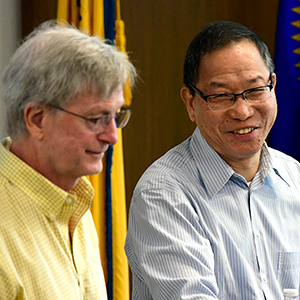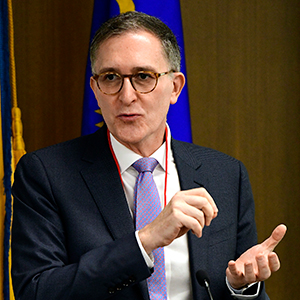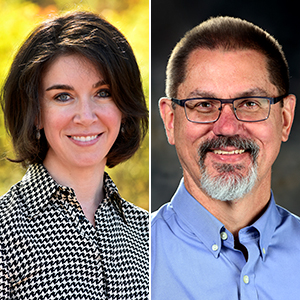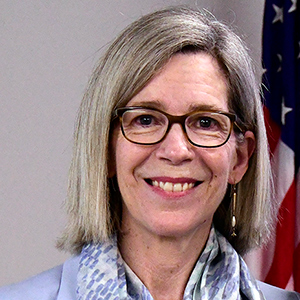I am excited to announce that I have selected Trevor K. Archer, Ph.D., a renowned expert in cancer biology, hormone receptors, chromatin function, epigenetics, and stem cells, to be the new NIEHS Deputy Director. His prolific research career spans more than three decades, two of which were spent in key scientific roles at the institute.
Throughout the years, I have had the privilege of knowing Dr. Archer as a colleague and as a person, and I am honored that we will work alongside each other going forward. His optimism about the future of NIEHS is contagious, as is his generosity of spirit. He brings extensive knowledge, team-building skills, and innovative thinking to his new role, making him a major asset not just to the institute but also to the broader environmental health sciences community.
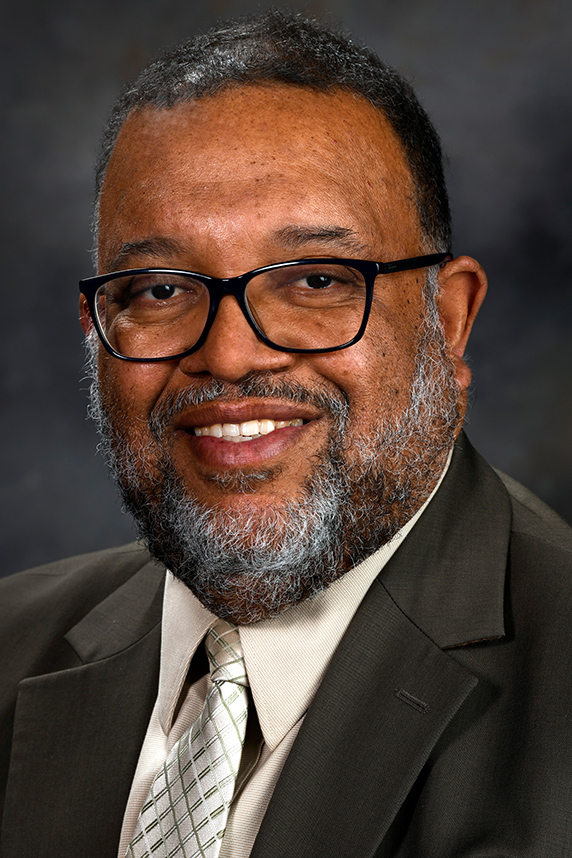 “When I speak with students, I try to express the joy and fulfillment that science brings,” said Archer. “Researchers get to do new, innovative things, and although such work may not have an immediate impact, it adds to a body of knowledge that can lead to profound improvements in how we think about human health and disease.” (Photo courtesy of Steve McCaw / NIEHS)
“When I speak with students, I try to express the joy and fulfillment that science brings,” said Archer. “Researchers get to do new, innovative things, and although such work may not have an immediate impact, it adds to a body of knowledge that can lead to profound improvements in how we think about human health and disease.” (Photo courtesy of Steve McCaw / NIEHS)After receiving his Ph.D. in biochemistry from Queens University, Canada, in 1987, Dr. Archer worked as a postdoctoral fellow at the National Cancer Institute. He then transitioned to academia, building a research program at the University of Western Ontario. Dr. Archer was recruited to NIEHS in 1999 to lead the Chromatin Structure and Gene Expression Group.
Later, he became chief of the institute’s Laboratory of Molecular Carcinogenesis, and in 2014, he was appointed head of the NIEHS Epigenetics and Stem Cell Biology Laboratory. Dr. Archer has published nearly 120 peer-reviewed papers and mentored many early-career researchers. In 2019, he was named a National Institutes of Health (NIH) Distinguished Investigator.
Beyond such achievements, he has sought to boost diversity in the workforce and encourage promising individuals from underrepresented groups to pursue research careers. I recently spoke with him to learn about his proudest accomplishments, what he hopes to tackle as Deputy Director, and what inspired him to become a scientist (see sidebar).
Helping others flourish
Rick Woychik: What made you want to apply to the Deputy Director job opening?
Trevor Archer: At first, I was not inclined to apply, in part because I was, and continue to be, very happy with my science and still deeply interested in the research projects going on in our lab. However, as I thought more about the job opening and spoke with colleagues, I began to realize that there are many ways to positively impact a scientific organization beyond conducting experiments.
Also, I knew that your values align with mine. We share the belief that by empowering others, welcoming new ideas, promoting diversity, and expanding collaboration, NIEHS will advance cutting-edge science and address pressing questions about how the environment affects health.
As Deputy Director, I have a terrific opportunity to step up my involvement in those efforts and to help us achieve our collective goals. Along the way, I hope to further enhance our workplace culture so that all institute staff can flourish in the years ahead.
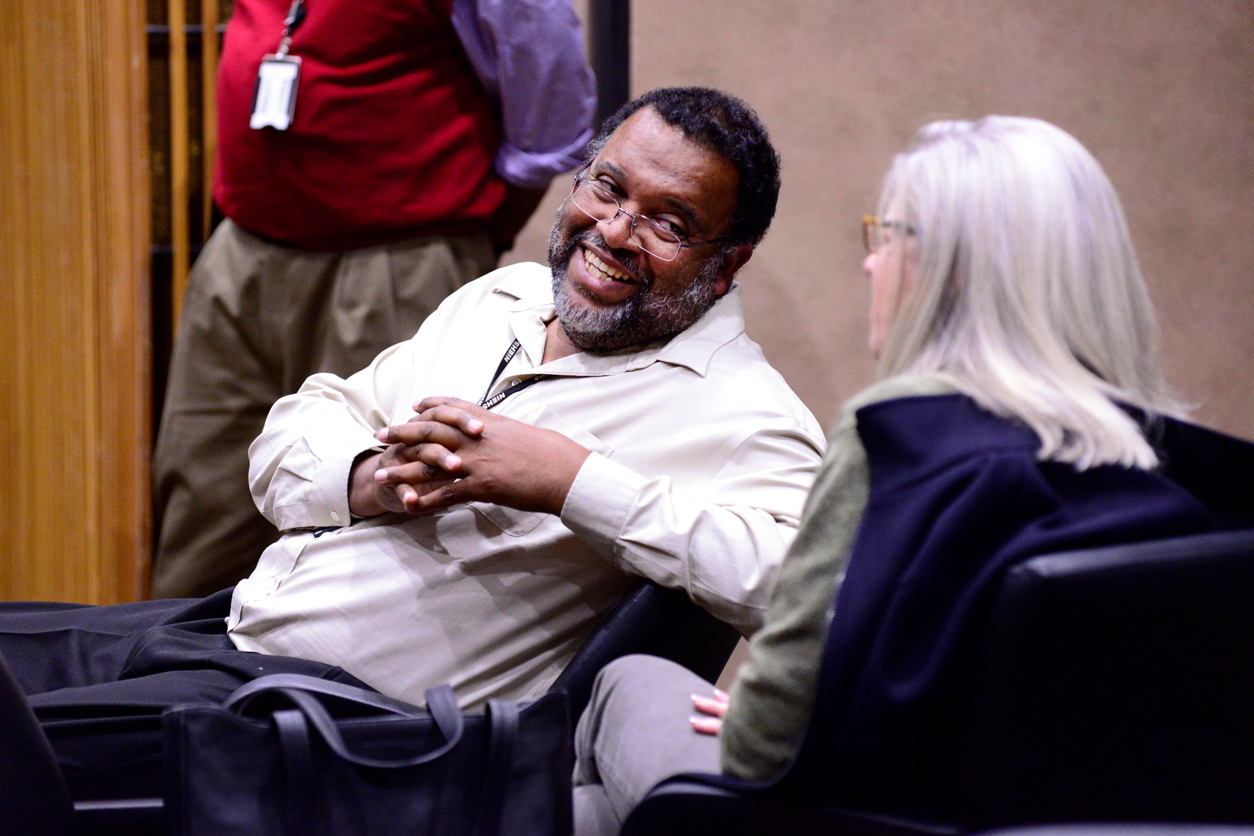 Archer, one of the most engaging scientists I know, is shown here speaking with NIEHS grant recipient Cheryl Walker, Ph.D., during a 2015 meeting at the institute. (Photo courtesy of Steve McCaw / NIEHS)
Archer, one of the most engaging scientists I know, is shown here speaking with NIEHS grant recipient Cheryl Walker, Ph.D., during a 2015 meeting at the institute. (Photo courtesy of Steve McCaw / NIEHS)Gene expression and disease
RW: You mentioned your research in the institute’s Epigenetics and Stem Cell Biology Laboratory. Can you share with readers some of your exciting work?
TA: Sure. As you know, the laboratory has long been interested in fundamental biological questions regarding cellular function. Among other topics, we have studied how environmental factors can affect the architecture of genetic material called chromatin. Structural changes to chromatin can alter gene expression, paving the way for cancer and other conditions.
There are roughly 30,000 genes in each cell, and about 12,000-15,000 of those are made into proteins. Our team has focused on a group of proteins that act as molecular motors, changing how other proteins respond to the internal and external environment. A couple of years ago, we used the power of genomics to show how chromatin architecture is altered, how that can affect gene expression, and how the modified genes potentially affect health and disease.
My group also has used steroid hormone signaling as a tool to understand the ways in which gene expression is controlled. For us, that is an important model for thinking about how environmental agents, particularly endocrine disrupting chemicals, can influence human health.
Diversifying studies, strengthening results
RW: I recall that you used a stem cell model to conduct an experiment looking at genetic variability. Can you expand on that work?
TA: Yes, that is an area that we are especially excited about. As you know through your background as a geneticist, trying to learn more about such variability, which is a hallmark of all people on the planet, is critical if we are to expand knowledge of human biology.
A few years ago, we designed an experiment where we took skin cells and then, through genetic manipulation, turned them into induced pluripotency stem cells [IPSCs], which can become any cell in the body. In the longer term, these kinds of studies will enable things such as precision medicine and personalized disease therapies.
My team conducted a small cohort study in which we analyzed both males and females from either European or African American ancestry. We sequenced RNA produced in their skin cells and then assessed the consequence of turning those cells into IPSCs.
Although there were no differences between males and females, we discovered that ancestry was a significant factor, meaning that skin cells of individuals from European versus African American backgrounds reprogrammed [turned into IPSCs] at different rates. This finding is important in part because it illustrates the power of using diverse cohorts. Our ability to distinguish the genes that we think are critical in this process was made possible only because we analyzed both ancestral groups.
Ultimately, improving the ways in which we generate IPSCs will have major implications as biomedical researchers try to study the effectiveness of different therapies and pharmaceuticals. Within the field of environmental health sciences, we hope that this kind of stem cell work will help to shed light on how different exposures may have varied effects depending on the cell of origin.
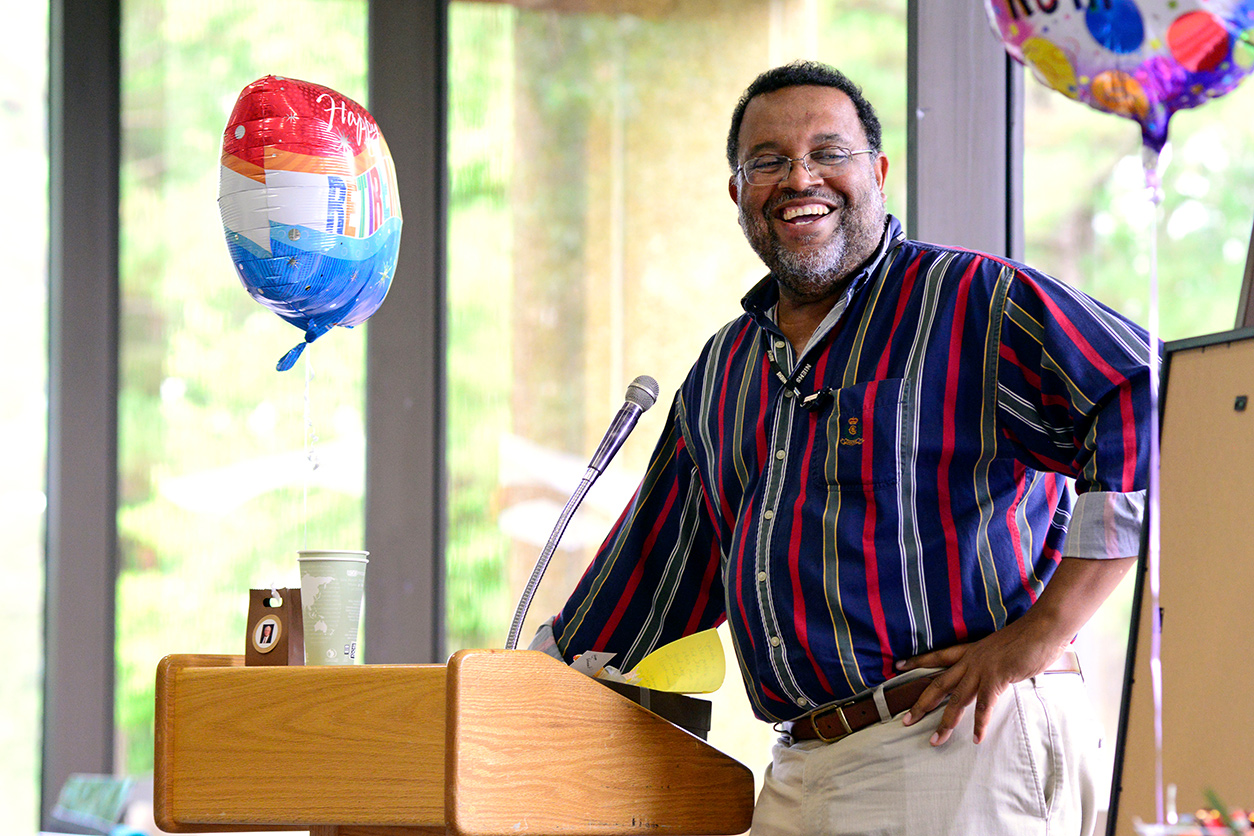 Archer is passionate about both science and people, which is one of many reasons why he is poised for success in his new role. He is shown here giving farewell remarks during a colleague’s retirement party in 2015. (Photo courtesy of Steve McCaw / NIEHS)
Archer is passionate about both science and people, which is one of many reasons why he is poised for success in his new role. He is shown here giving farewell remarks during a colleague’s retirement party in 2015. (Photo courtesy of Steve McCaw / NIEHS)Innovation through diversity
RW: What projects are you focused on as we move into the new year?
TA: Enhancing diversity, equity, inclusion, and accessibility at NIEHS and across NIH is one of my goals, and I would be remiss if I did not point out that you, Dr. Darryl Zeldin [NIEHS Scientific Director], and leaders at the other institutes and centers have been very supportive of these efforts.
Recently, I have worked on the NIH UNITE initiative, where I co-chair a committee focused on improving workplace culture. Through that effort, my colleagues and I have sought to ensure that our organizations draw on many talented individuals — from myriad backgrounds — because we believe that more diverse groups are more effective groups.
The goal is to develop practices that allow us to do the best science possible, both in terms of how we conduct research and the makeup of the people on our teams.
I think NIH is well positioned to lead a true renaissance in biomedical sciences that is more inclusive, innovative, and impactful for human health. The research project that I discussed earlier, where we incorporated greater genetic variability in our model, is one example of how we can start to think more broadly about the populations we study, so that our work is relevant to more people.
And in terms of the workforce, expanding the talent pool has been a lifelong passion of mine. I am proud that when I led the Epigenetics and Stem Cell Biology lab, I recruited a diverse and gifted group of young investigators who went on to make important scientific contributions, and I look forward to inspiring others to do the same. I have been very fortunate to have terrific colleagues in my research group, and their hard work is a constant inspiration to me.
In the coming months, I will help to recruit a Chief Diversity Officer to NIEHS. This individual will spearhead projects that are informed by the principles mentioned above. I think that going forward, our institute will emerge as a leader in how to meaningfully enhance diversity, equity, inclusion, and accessibility.
Citations:
Trotter KW, Archer TK. 2004. Reconstitution of glucocorticoid receptor-dependent transcription in vivo. Mol Cell Biol 24(8):3347–58.
Fryer CJ, Archer TK. 1998. Chromatin remodelling by the glucocorticoid receptor requires the BRG1 complex. Nature 393(6680):88–91.
Kinyamu HK, Bennett BD, Bushel PR, Archer TK. Proteasome inhibition creates a chromatin landscape favorable to RNA Pol II processivity. 2020. J Biol Chem 295(5):1271–1287.
Hoffman JA, Trotter KW, Ward JM, Archer TK. 2018. BRG1 governs glucocorticoid receptor interactions with chromatin and pioneer factors across the genome. Elife 7:e35073.
Kinyamu HK, Collins JB, Grissom SF, Hebbar PB, Archer TK. 2008. Genome wide transcriptional profiling in breast cancer cells reveals distinct changes in hormone receptor target genes and chromatin modifying enzymes after proteasome inhibition. Mol Carcinog 47(11):845–885.
Bisogno LS, Yang J, Bennett BD, Ward JM, Mackey LC, Annab LA, Bushel PR, Singhal S, Schurman SH, Byun JS, Napoles AM, Perez-Stable EJ, Fargo DC, Gardner K, Archer TK. 2020. Ancestry-dependent gene expression correlates with reprogramming to pluripotency and multiple dynamic biological processes. Sci Adv 6(47):eabc3851.
Collins FS, Adams AB, Aklin C, Archer TK, Bernard MA, Boone E, Burklow J, Evans MK, Jackson S, Johnson AC, Lorsch J, Lowden MR, Napoles AM, Ordonez AE, Rivers R, Rucker V, Schwetz T, Segre JA, Tabak LA, Hooper MW, Wolinetz C; NIH UNITE. 2021. Affirming NIH's commitment to addressing structural racism in the biomedical research enterprise. Cell 184(12):3075–3079.
(Rick Woychik, Ph.D., directs NIEHS and the National Toxicology Program.)






